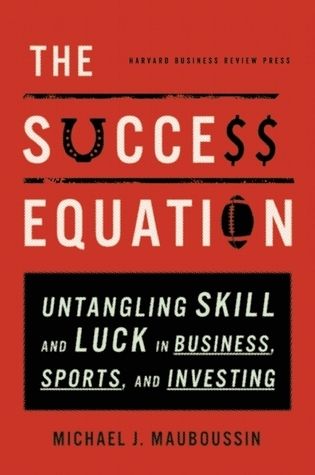Chapter 1 also introduces the concept of reversion to the mean - the idea that an outcome that is far from the average will be followed by an outcome that is closer to the average. Reversion to the mean occurs whenever two measures are imperfectly correlated. The lower the correlation, the more extreme the reversion. In activities with a significant element of luck, reversion to the mean can be a powerful force. A few key implications:
- Don't overreact to extreme performances, good or bad. They are likely to revert toward the average.
- Be wary of paying for past performance. The "hot hand" may be nothing more than luck.
- Anticipate reversion in your own performance. If you have a great year, don't expect to maintain that level. If you have a terrible year, better times are likely ahead.
Section: 1, Chapter: 1
A good metric should have three key properties:
- Consistency - Does the metric reliably measure the same thing across time and contexts?
- Predictive power - Does the metric actually predict the outcome we care about?
- Noisiness - How much random variability is there in the metric relative to the signal?
The best metrics are consistent, predictive, and have a high signal-to-noise ratio. Examples of useful metrics include:
- On-base percentage in baseball (consistent, predictive of scoring, less noisy than batting average)
- Customer retention rate in business (consistent, predictive of profits, less noisy than raw sales numbers)
- Sharpe ratio in investing (consistent way to measure risk-adjusted returns, predictive of fund quality)
Section: 1, Chapter: 7
Mauboussin illustrates the skill-luck continuum using the example of the NBA draft lottery. In the lottery, the worst teams get the highest probability of winning the top draft picks, in an effort to maintain competitive balance.
Mauboussin and his colleagues simulated the draft lottery under two scenarios: one with pure luck (a weighted coin flip) and one with pure skill (the worst team always gets the #1 pick). They then compared the actual results to these two extremes.
The results showed that the real NBA draft lottery results fell almost exactly halfway between pure luck and pure skill, suggesting that the lottery system does a good job of blending luck and skill to achieve its intended purpose. This type of simulation - comparing real-world results to luck and skill extremes - can be a useful tool for placing activities on the skill-luck continuum.
Section: 1, Chapter: 3
Chapter 3 presents a method for empirically placing activities on the skill-luck continuum, using three statistics:
- Demonstrated consistency of outcomes across repeated trials (e.g. year-to-year correlation of batting averages)
- The distribution of success among the population of participants (e.g. number of players hitting above .300)
- The ability of a measure to predict future performance (e.g. correlation of on-base percentage to future runs scored) Using these measures, we can estimate the relative contribution of skill and luck in different domains.
Section: 1, Chapter: 3
- Basketball statistics show high year-to-year correlations, a dispersed distribution of success, and strong predictive power - indicating a strong role for skill
- Hockey statistics show lower consistency, a more concentrated success distribution, and less predictive power - indicating a larger role for luck These statistical tools give us an objective way to assess the skill-luck balance in different domains and make better predictions.
Section: 1, Chapter: 3
Mauboussin examines the surprising statistical regularities that show up across many domains of human performance. The key finding is that many performance metrics follow a power law distribution, wherein:
- A small number of top performers account for a disproportionate share of the total output
- The gap between the best and the rest is much larger than a normal distribution would predict.
For Example:
- City sizes (a few mega-cities, many small towns)
- Wealth distribution (a few billionaires, many people of modest means)
- Bestseller lists (a few blockbuster hits, many low-selling titles)
- Scientific citations (a few papers with massive impact, many rarely-cited papers)
The power law pattern arises from the complex social dynamics that shape success in these domains - in particular, the rich-get-richer effects of cumulative advantage.
Section: 1, Chapter: 6


